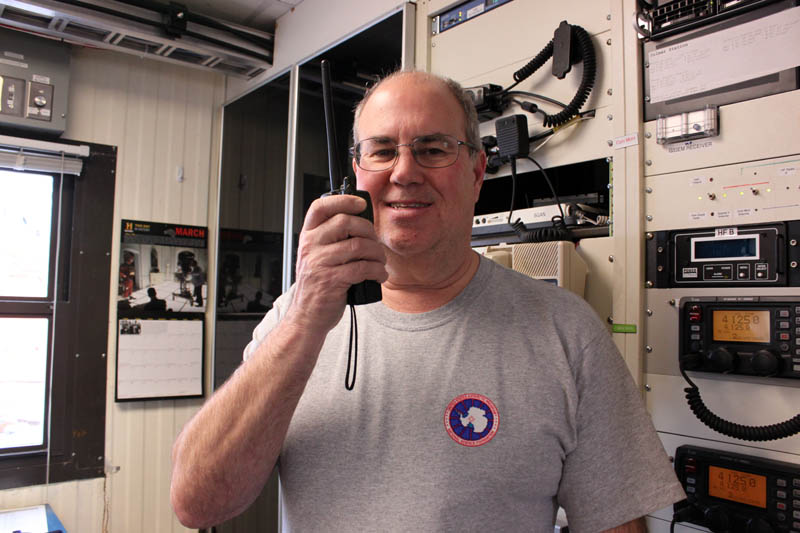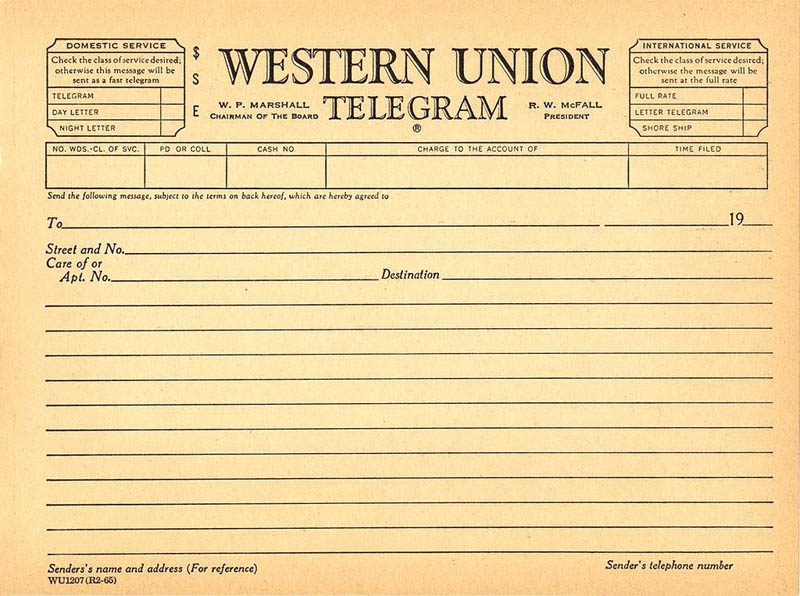
Without revealing my age, I confess that my first expedition to a polar region of the planet (the sub-Antarctic island of Kerguelen in the Southern Indian Ocean) provided a glimpse of truly historic ‘comms’ (communications). Here in 1982, at the Port-aux-Français research station, communicating with family and friends was accomplished by sending a telegram. Yes, an old fashioned Western Union Telegram. With a steep cost of three to four dollars per word, and given my income as a graduate student, my fiancé, Ferne, received but a handful of meticulously selected words over my three month absence.
Later, during my mid-1980s to late-1990’s stint conducting research at the U.S. McMurdo Station in the Antarctic Ross Sea, comms only improved marginally. There were MARSGRAMS, essentially short letters of limited length that were written out by hand and stuffed in a mailbox in the galley (see image below). Our MARSGRAMS were then read over HAM radio to a remarkably philanthropic HAM radio operator in the United States, who typed out the letter and then sent it off to its recipient via the U.S. Postal Service. Needless to say this was not a speedy operation and often letters did not arrive at their destination for several weeks.
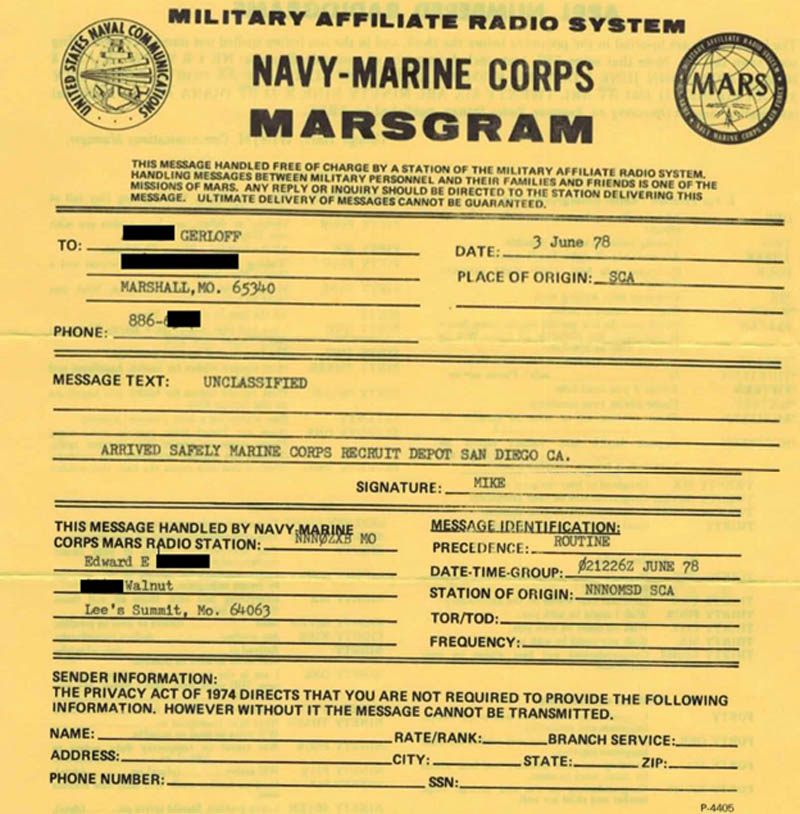
More speedy, but with its own issues, was the direct use of HAM Radio. I only did this several times at McMurdo Station before losing interest. This was because you had to stop and say ‘over’ after each sentence, something my wife and I never mastered. Moreover, everyone, and I mean everyone, with access to a HAM radio in the northern hemisphere was listening to what we had to say. So much for privacy! (Palmer Station, like McMurdo Station, still have HAM radio offices, used mostly by HAM enthusiasts – here is an image of the HAM radio room currently at Palmer Station - notice the contact key desk left for Morse code if operator not voice-licensed).
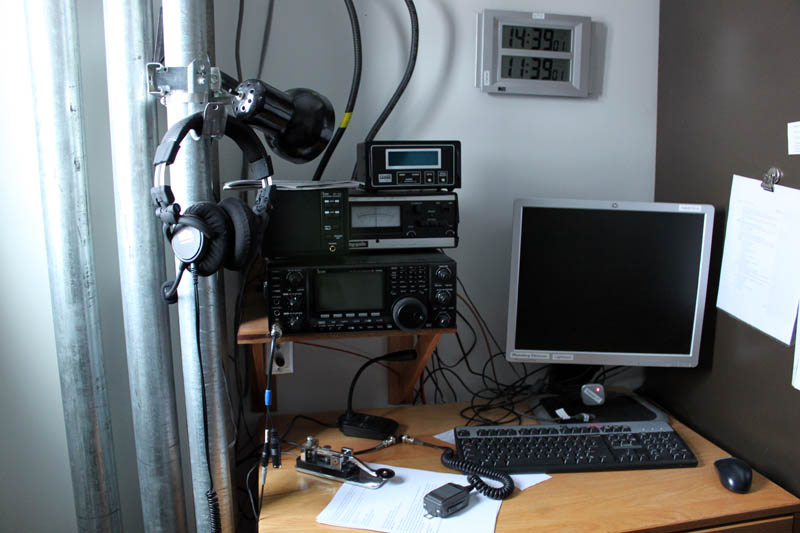
I managed to offset this vacuum in communication by reserving a phone call once a week at Scott Base, the New Zealand station about a 40 min walk from McMurdo Station. Scott Base offered a more sophisticated comms option, a genuine phone booth (see image below of a similar but more recent phone booth at Scott Base) with a radio phone that connected with to a radio phone station in New Zealand. The call was then routed directly via undersea telephone cables to the U.S. The phone connection sounded like one was speaking down a long hollow tube, and there was an awkward one to two second delay that fostered many humorous or frustrating sentence overlaps, but it was, at least, private.

My how comms in Antarctica have changed today! When our Palmer-based UAB team arrived this past February, IT expert Jeff Otten announced at our arrival briefing that the band width for Palmer Station had increased over the past year. Nonetheless, he cautioned, the entire station still essentially operated on the band width of an iPhone back home, but that we now were allowed to attach a photo to an e-mail, and even download a movie after 10 pm at night when the station personnel had gone to bed.
During our team’s stay at Palmer Station we enjoy the use of IT phones (internet phones) both in our office and lab space and our dorm rooms. The IP connection is excellent and there really is no detectable lag time when speaking with someone in the U.S. In fact, the connection is so good that when I was interviewed at Palmer Station this past March for NPR’s ‘The Morning Edition with David Greene’ the sound technician at NPR was delighted with the quality of the voice transmissions.
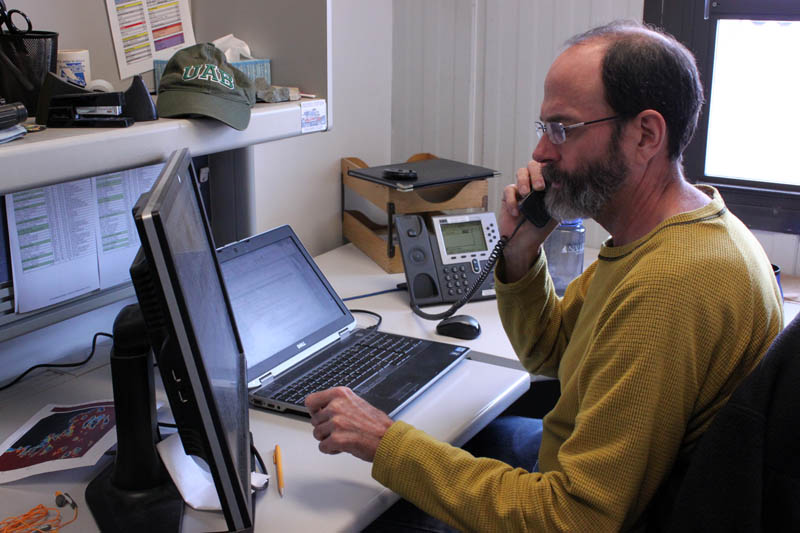
Finally, in the spectrum of Antarctic comms, I would be remiss not to mention the short-wave hand-held radios that everyone at Palmer Station uses when operating in the field. Checking out a hand held radio is paramount to ensure individual and team safety. Every time our team heads out in our zodiac we bring along two radios (each fully charged), and even during a recreational hike up the glacier, a hard held radio is pocketed. Chuck Kimball, the “Sat Comm Engineer” (Palmer-speak for Satellite Communications), is our station ‘radio guru (see photo below). Everyone at Palmer Station respects Chuck’s gentle reminders to stay in regular touch (we call in every 30 min when out in the zodiac). His reminders remind us that we are, after all, operating in Antarctica.
